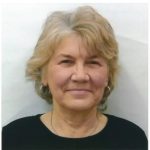 Those who serve older adults periodically come across individuals with no children or children who live at a distance from them. Historically, most adults aged 65 and above seemed to have at least one family member who could provide some measure of care and support. That situation is now changing, however, in a big way, and will continue to change long into the future.
Those who serve older adults periodically come across individuals with no children or children who live at a distance from them. Historically, most adults aged 65 and above seemed to have at least one family member who could provide some measure of care and support. That situation is now changing, however, in a big way, and will continue to change long into the future.
A growing portion of the “Baby Boom” generation is composed of “solos.” These are individuals who cannot or do not rely on family to help navigate life events and make health decisions. Having no children or children at a distance continue to be important reasons. But other common risks for “solo-ness” include having a dysfunctional family or being estranged from them, along with extreme independence, lack of social skills, and/or reclusiveness.
Recent research is beginning to reveal still another factor in solo-ness, however. Many are electing to limit the involvement of family when support is needed or not to involve them at all, even when relationships are solid. For example, a 2016 study from the Center for Public Affairs Research found that 22% of respondents would prefer to receive “living assistance” from a professional home health aide rather than family. An additional 6% said they didn’t know who they would choose to provide support. No one knows how many solos age 55+ there are now or will be in the future, though preliminary estimates suggest this definition could apply to 23% to 30% of older adults.
Because of improved health and greater longevity, demographers believe that most people today can look forward to a “long middle” of good functioning. Still, during these years, older adults may experience unexpected health events, short-term illnesses, or other well-being issues that require decisions and action. With the historical focus on the frail elderly, it is easy to overlook the fact that even adults with physical and mental capacity may need assistance in choosing providers or services, navigating health care systems, planning for care after a procedure, and/or advocating on their own behalf, among other such tasks.
When family are not in the picture, there is a huge decision support gap for solos. This gap offers a good opportunity for those with relevant skills, such as individuals in Aging Life Care professions, to step in. Solos are often on the lookout for individuals who can be part of their personal safety net and help with the small, but common health and well being decisions likely to arise during the long middle.
Solos don’t always know where to look for such assistance, though, so it is important to keep solos in mind when designing outreach efforts. If you are able to offer services to solos, make sure you speak to them directly in your promotional materials and web sites. Indicate that you serve solos and people with families alike. Be specific about the services you offer, such as supporter, health advocate, emergency contact, navigator, etc. Highlight your services to solos at senior resource fairs and presentations.
About the Author: Linda J. Camp is an independent consultant, writer, and researcher. Her work focuses on strategic planning, systems analysis, and change management for non-profits and local government. From 2017-2019 she served as Project Manager for a Bush Foundation funded project on health decision making by/for solo older adults. You can reach her at: mnscribbler@gmail.com
This article originally appeared in the ALCA Midwest Chapter member newsletter – Issue. No. 69 – Summer 2021.